Are you ready to take the plunge into an exciting new chapter of your career? If you've just snagged that dream job, it's perfectly natural to feel a mix of excitement and apprehension about leaving your current position. Writing a resignation letter may feel daunting, but it doesn't have to be. Let's explore a simple template and tips to help you craft the perfect farewell message as you embark on this thrilling journey - read on to find out more!

Gratitude and appreciation for current role and opportunities.
A recent job transition is an important milestone for career growth and personal development. Gratitude for current roles and opportunities within an organization can provide a positive and respectful tone during this change. Professional environments can significantly impact skill enhancement and networking capabilities, especially in industries such as technology, healthcare, or finance. Acknowledging mentorship from supervisors and collaboration with colleagues fosters goodwill. Expressing appreciation for specific projects and achievements, such as successful product launches or major sales milestones, highlights valuable experiences gained. Ultimately, conveying excitement for a new role, perhaps in a field like marketing or software development, can indicate ambition while maintaining strong relationships with the current workplace.
Notice period and last working day.
Resignation from a position can be challenging yet rewarding after securing a dream job. A well-crafted resignation notice is essential to ensure a smooth transition. Include your current role title, the company name, and a formal notice period, typically two weeks to one month, as per employment contracts. Clearly state your last working day, allowing ample time for the employer to arrange for a handover. Express gratitude towards colleagues and the organization, emphasizing the valuable experiences gained and the professional growth accomplished during your tenure. This positive tone helps maintain relationships and preserves your professional reputation.
Transition assistance and handover plans.
When transitioning from a current position after accepting a dream job, it's vital to provide clear transition assistance to ensure a smooth handover process. Colleagues must have access to necessary resources and information. Create a comprehensive handover document outlining ongoing projects with detailed statuses, deadlines, and key contacts for each task. Schedule dedicated meetings with team members to discuss responsibilities, workflows, and answer any questions regarding pending assignments. Additionally, provide insight into client communication strategies and critical relationships that require attention post-departure. Offer to train a team member or a designated successor to facilitate knowledge transfer about specific processes and proprietary systems used in daily operations. Maintaining professionalism and support during the transition reflects positively on both the departing employee and the workplace environment.
Expression of excitement for new opportunity.
Resigning from a position can be a significant step in one's career journey, especially when transitioning to a dream job. This moment is often filled with excitement and anticipation for personal and professional growth. The decision to leave a current role can stem from various factors, such as the desire for new challenges, alignment with passion, or advancement in one's field. Communicating the decision to resign, particularly in a professional setting, involves expressing gratitude for past experiences and acknowledging the relationships formed during tenure. It's essential to convey a sense of enthusiasm for the new opportunity ahead, while also leaving the current role on a positive note. The process often includes considerations of proper notice periods, company policies, and procedures for transitioning responsibilities, ensuring a respectful departure that maintains professional ties.
Offer to maintain professional relationships.
After securing a desired position at a prominent company, resigning from a current role can be a crucial step in career advancement. It is essential to communicate this transition respectfully and professionally, expressing gratitude for the opportunities provided. Maintaining relationships with colleagues is vital for future networking, while also offering assistance during the transition period shows professionalism. Mentioning willingness to assist in training a replacement or completing outstanding projects can demonstrate a commitment to a smooth handover. Notifying superiors about the resignation in a timely manner, ideally two weeks in advance, allows the organization to adjust and make necessary arrangements while reflecting positively on the individual's professionalism.

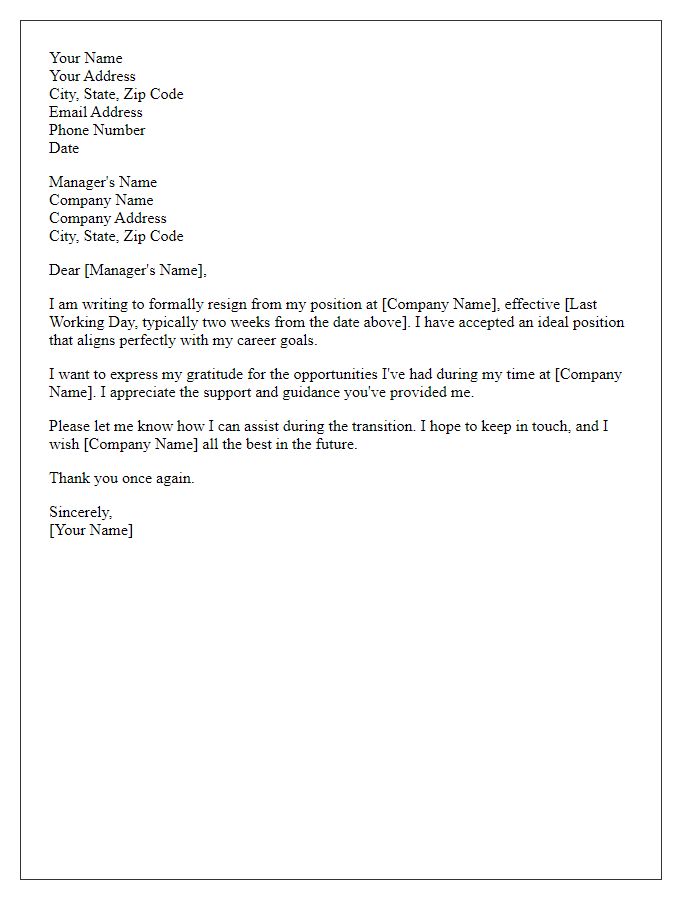
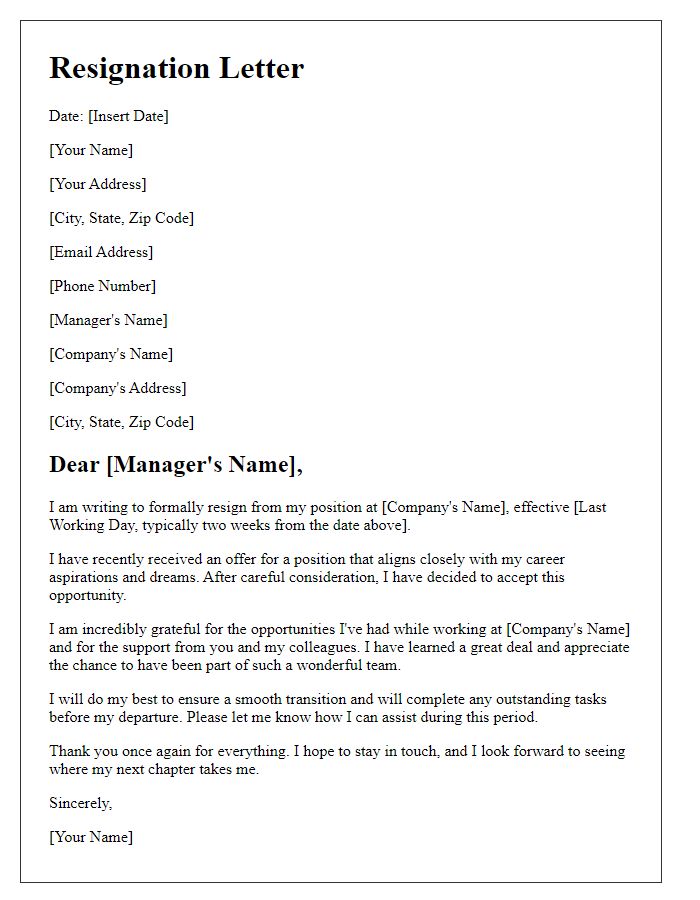
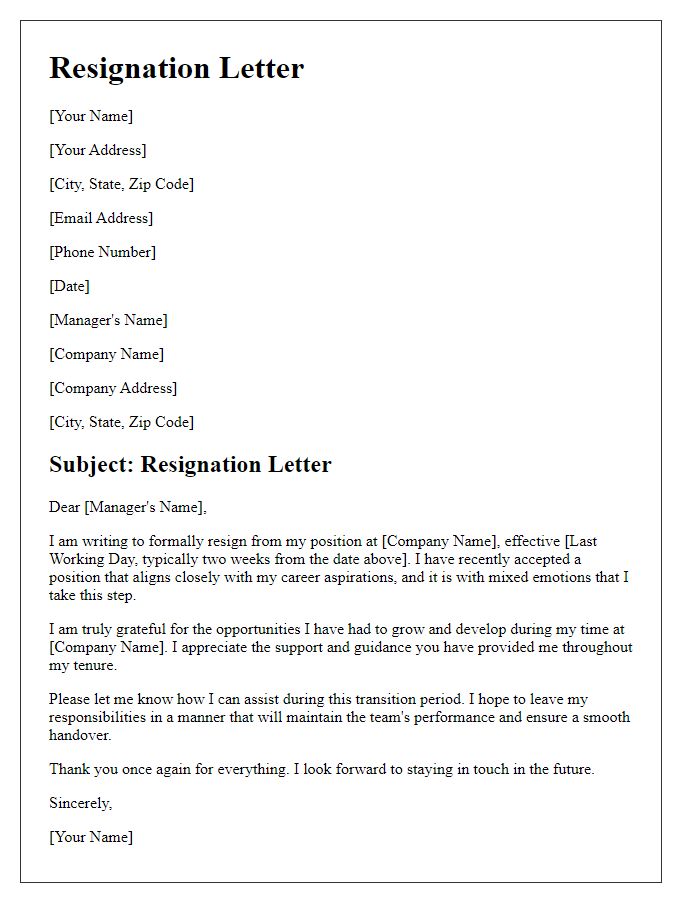
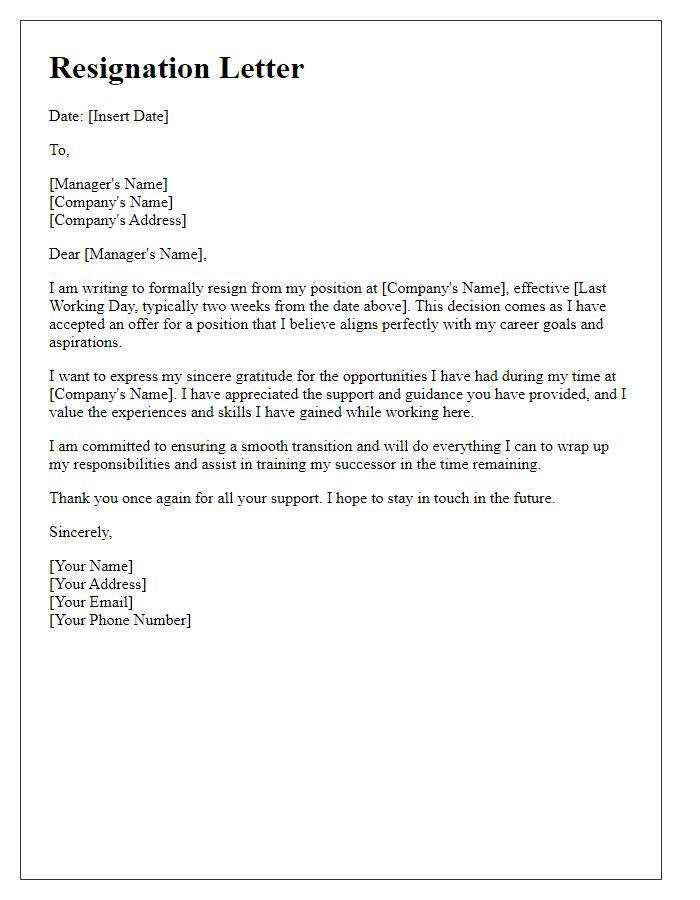
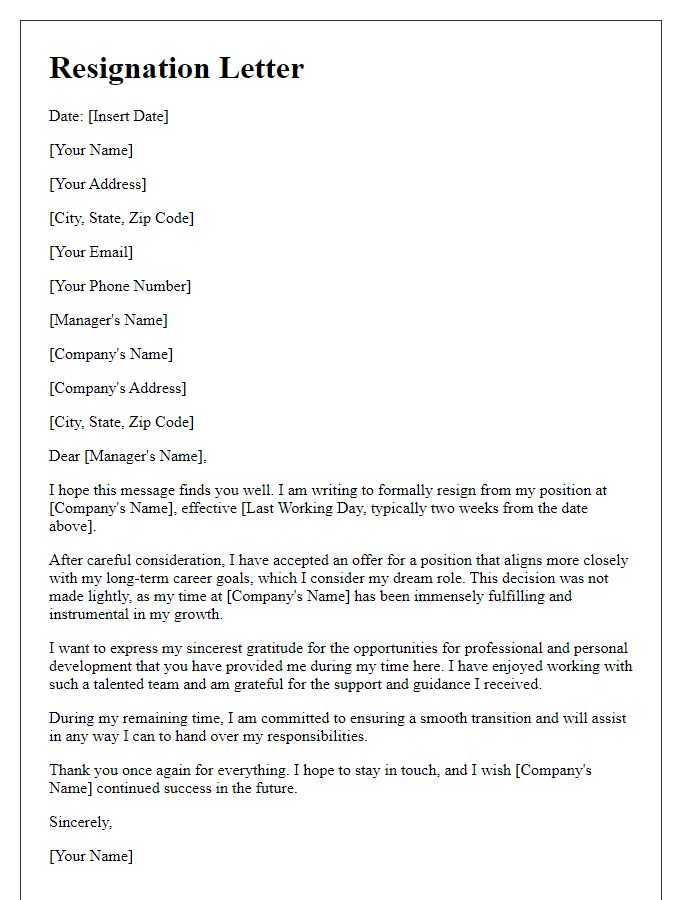
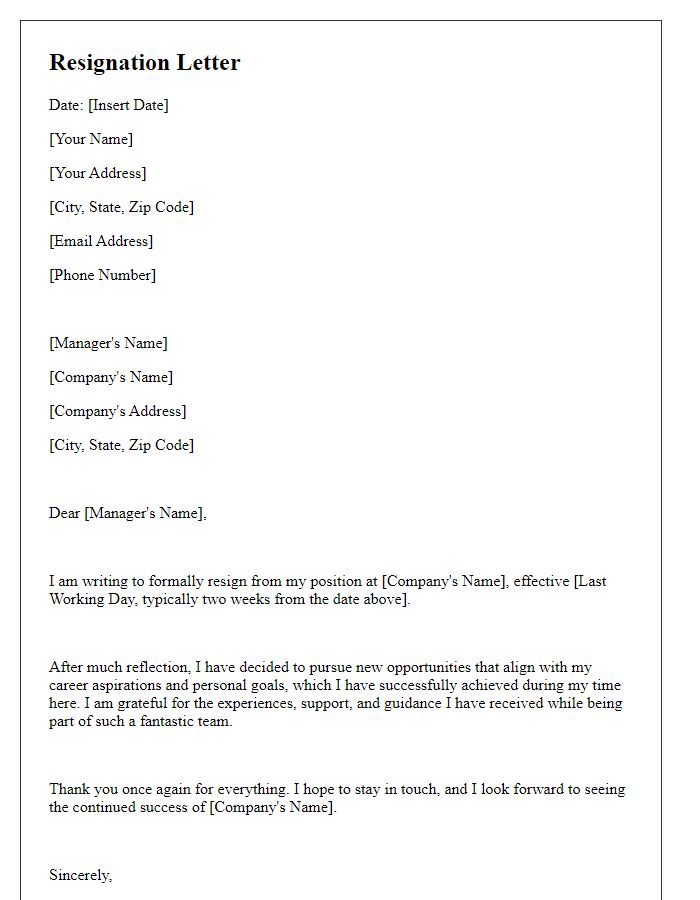

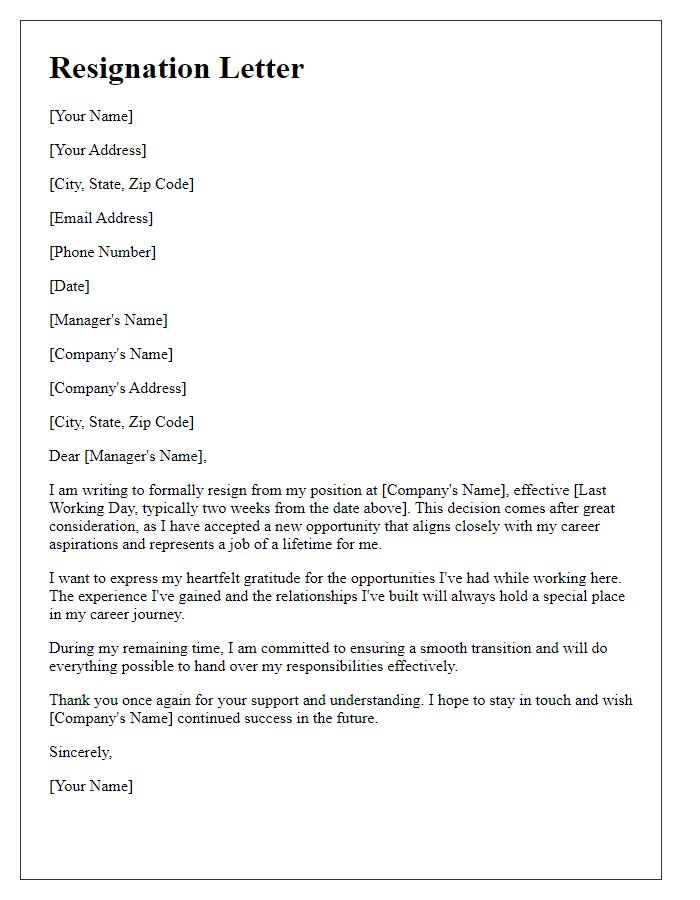
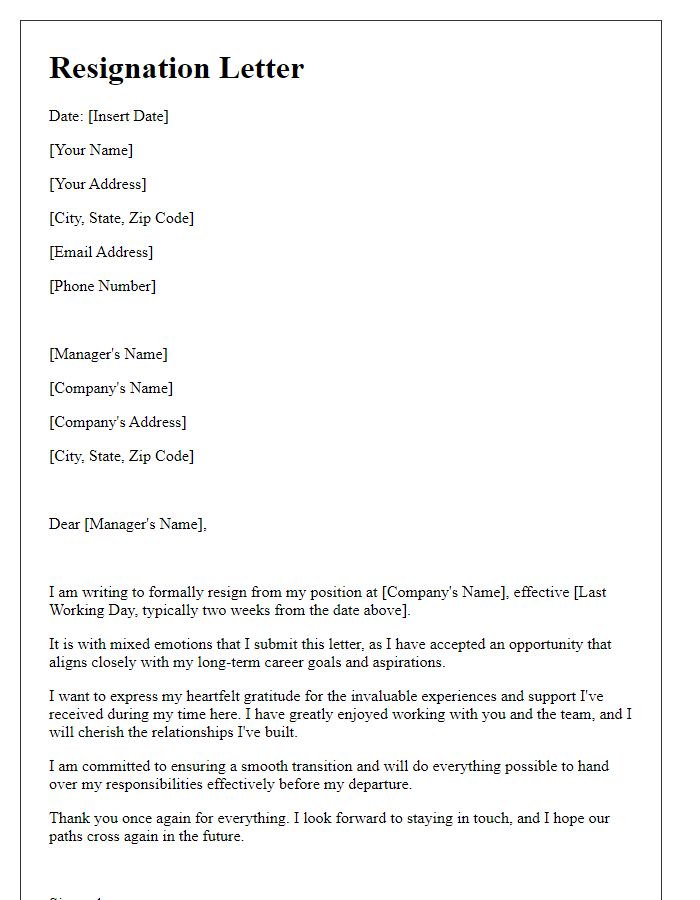
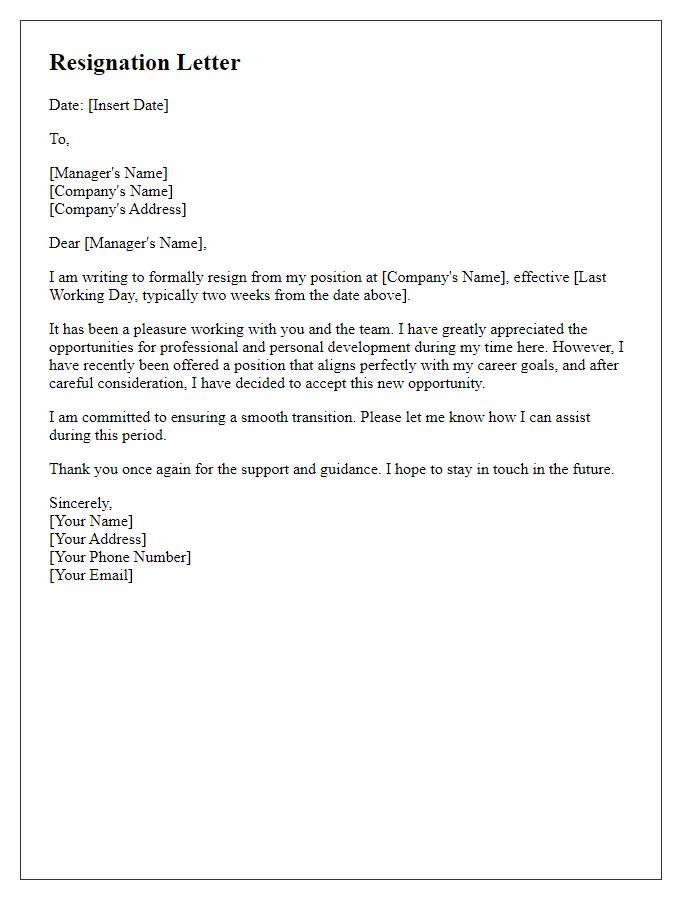


Comments